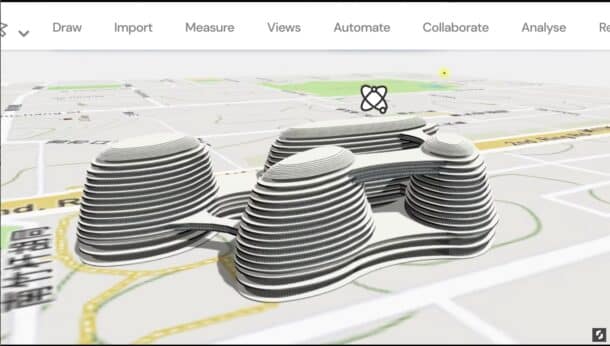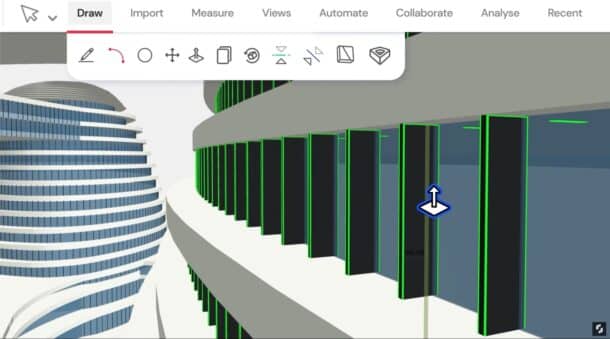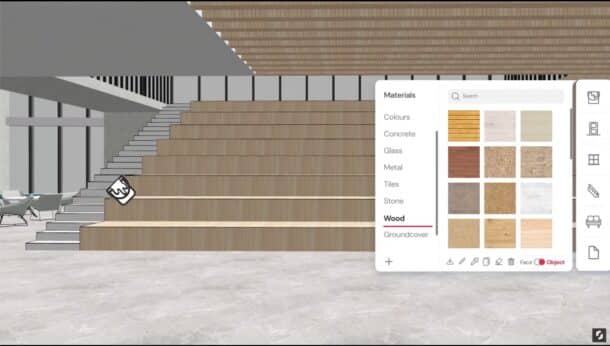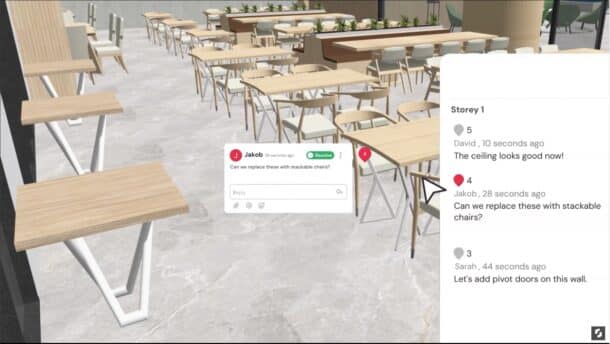[Editor’s note: This special feature ran first in our December issue of Xpresso, our newsletter focused on emerging technologies in AEC. Sign up here to see special features first.]
IN HIS BOOK “The Innovator’s Dilemma,” Clayton Christensen highlights the difference between sustaining innovations, which refer to incremental improvements made by established companies to satisfy their existing customers, and disruptive innovations, which challenge the status quo and often target new or underserved customer segments. Autodesk’s efforts, in response to the needs of most of its Revit customers and in addressing the concerns of its Open Revit Letter customers, primarily involve sustaining innovations.
The AEC industry is one of the most collaborative of all industries, yet it really struggles with collaboration.
Disruptive innovations have a few hallmark qualities that separate them from sustaining innovations. One of them is they are often simpler technologies or approach the market on new, simpler means of delivery. Another critical hallmark feature is they initially cater to niche markets. Snaptrude fits the description of both of these.
Moreover, Revit fits the “dilemmas” Christensen outlines in his now-famous book. The chief dilemma is that successful companies become trapped in a cycle of maintaining their existing products and serving their vast customers’ wishes, thus making it challenging to embrace paradigm-shifting innovations like the cloud.
The Cloud Era of BIM
Snaptrude is a cloud-based tool that simplifies industry workflows and aims to prevent data silos. However, growing its customer base and proving its value to the market are its main challenges.
Altaf Ganihar, Snaptrude’s CEO, says his cloud-based BIM tool will address critical shortcomings of industry software. One of those is that the most ubiquitous BIM authoring tool, Revit, needs to be better suited for conceptual design. And Ganihar is also taking issue with another industry challenge: collaboration.

Image of US market-leading BIM tool Revit on left and Snaptrude on right. While Snaptrude aims to disrupt the leader, it also aims to work in tandem with it. (Image: Snaptrude)
“The AEC industry is one of the most collaborative of all industries, yet it really struggles with collaboration, says Ganihar. “I think the true promise of BIM is bringing people together,” he continues, “and relating the relevant and necessary information to each party.”
Ganihar rattles through several shortcomings with today’s collaboration tools, including that even those in the cloud —don’t talk to all the other tools in the cloud. “Are we not just recreating the siloed desktop workflows again on the cloud?” he asks.
Schematic Design is Broken Also
There is little doubt that collaboration in the AEC industry still needs to be solved. But that is not even the primary focus of Snaptrude. Snaptrude aims to solve the issues that emerge during schematic design when groups of architects try to design together in a tool like Revit.
Most architects feel that Revit is found wanting in the conceptual design stage. So, they use Rhino 3D to create cutting-edge forms and SketchUp for rapid-fire modeling. Autodesk fully acknowledges this in several ways, from its SketchUp-like FormIT 3D modeling tool to its latest Rhino to Revit interoperability capabilities.

Image showing quick schematic modeling in Snaptrude focused on “massing” and how in the next image, it can be transformed into much more. (Image: Snaptrude)
Snaptrude is aimed at the sweet spot between Rhino and SketchUp, delivering facile push-pull modeling tools (a la SketchUp) and enabling more advanced parametric constraint-based modeling designed for mere mortals.
Part of the reason why this doesn’t exist today in Revit is partly due to its mechanical CAD industry origins. Its originators came from PTC. “Sketching is much more natural to architects than mechanical engineers, so our approach to sketching is a big difference in Snaptrude,” he says.

Image showing the automated conversion of a massing model to a detailed architectural model, but using forms that are far more fluid than what is easily created in SketchUp. Most architects using Sketchup create rectangular forms, while users needing more organic curved forms use Rhino 3D. (Image: Snaptrude)
“Constraints are important, but architects don’t always want to be constrained,” he notes. “Sometimes they want to think out of the constraints and then come back into them to work,” before adding, “That’s why people love Rhino and SketchUp.”
3D Modeling in Snaptrude V2
Indeed, design requires a certain level of freedom, and digital tools have long been criticized for limiting that or even inadvertently shaping the direction of architectural expression. In one of Architosh’s most-read stories from a decade ago (see: Architosh, “Viewpoint: How BIM is Crushing the Art from Architecture and How to Stop It,” 4 Nov 2013), architect Louis B. Smith, AIA, lamented that “BIM has made the ability to express artistic and creative intent more difficult.” His viewpoint piece gained widespread reaction both in agreement and disagreement.
Sketching is much more natural to architects than mechanical engineers, so our approach to sketching is a big difference in Snaptrude.
Since then, tools like Rhino 3D have only gained greater traction in architectural schools and firms. Snaptrude’s answer to the creative needs of architects fuses a mixture of SketchUp-like push-pull modeling (explicit modeling) in combination with “intelligent” parametric modeling, meaning that intelligent implies both power in modeling automation and where precisely architects want that automation to be applied.
The problem with today’s BIM tools is often the incorrect balance between explicit direct modeling versus parametrics. Louis B. Smith cited both the Sydney Opera House and Calatrava’s Milwaukee Museum of Art Addition as iconic designs “built before the advent of BIM or “before BIM was a leading trend,” and yet both used “some of the most capable computing and analysis technology that could be had at the time.”

Image showing how intelligent parametric modeling can change multiple elements in a facade en masse. This kind of mixture of fast SketchUp-like modeling but unconstrained by rectangular forms can be paired with parametrics that are improved by using push-pull adjustment, not dialog box input or complex script adjustment. (Image: Snaptrude)
Snaptrude features the ability to design with spaces rather than with lines and walls, taking initial conceptual spatial layouts and auto-generating a BIM model. Then, it combines push-pull direct modeling that rivals SketchUp’s somewhat legendary core feature. Like leading BIM tools, Snaptrude also features intelligent stories and quantifiable data on a building’s areas and volumes related to spaces, walls, floors, roofs, and other object types.
Snaptrude interoperates with several AEC industry tools, but engaging the front end of the design process in Revit-based firms is a big part of its story. “The big idea behind the product is to focus on the conceptual and programming side of things and to help users create early massing and quickly take that into a BIM model,” says Ganihar. Snaptrude can round-trip with Revit, essentially taking over tasks in Revit firms often executed in SketchUp.
The big idea behind the product is to focus on the conceptual and programming side of things and to help users create early massing and quickly take that into a BIM model.
And the new Split Command improvements give Snaptrude more powerful push-pull modeling features. With its built-in wall tools, the user can quickly edit wall thicknesses and import and use Revit wall families from imported Revit files. “Once you import a Revit file or just as a template, you now have Revit wall types in your libraries in Snaptrude,” he adds.
As for glazing and curtain walls, the latter in Snaptrude enables profile option changes, dimensional controls, and direct editing of where you place vertical and horizontal support mullions.
Snaptrude Futures
Altaf Ganihar won’t go on public record about Snaptrude‘s big long-term goals, but what he has shared with me could best be described as ambitious. What is clear at this moment about this new BIM 2.0 tool is it takes on clear characteristics of disruptive technology. Snaptrude is having early solid success in a niche market—commercial interior architecture.
That fact reinforces this author’s view that some market segments and building types will be best served by digital tools directed principally at their unique needs. Yet, Ganihar sees things differently for both the industry and Snaptrude. When I asked him about his philosophy about the BIM industry and Snaptrude, he said this:

Image showing the visual quality inside Snaptrude and the object types common to both it and standard BIM authoring tools. (Image: Snaptrude)
“I will give you two perspectives. From the code view, the core tool [in Snaptrude] will want to be the same, and modules built on top of that can be specialized.” He mentions Revit Mechanical as an example. “But how do you put the user interface around the user for each persona?” is a question and issue that Ganihar feels the industry has not answered yet.
“For us, there will be just one Snaptrude platform,” he says, “and multiple tools will be built on top of it.” The modules, he tells me, will be developed by Snaptrude, ideally, and third parties may have a role in advancing the modules.
Revit, IFC, USD, and Interop
Those statements paint a rough picture of Snaptrude’s philosophy going forward—one that is confident and ambitious. The company is also well capitalized, with no need for additional funding for the next few years.
Still, Snaptrude will have challenges and evolve in directions driven by how the market reacts to the software and what it delivers. Part of those challenges include data interoperability. While the cloud tool today can import data from AutoCAD, Revit, SketchUp, and Rhino and export back into Revit, the ambitions Ganihar envisions for Snaptrude and the changes possible in the AEC industry at large require more data fluidity than file-based imports and exports.

Image showing how Snaptrude offers multitudes of materials to apply to the surfaces of elements in the model. (Image: Snaptrude)
When I mention that Autodesk CEO Andrew Anagnost said that files are not the way of the future in the cloud era, Ganihar largely agrees in principle. (see: Architosh, “What’s Beyond Revit—Anagnost on Autodesk AEC Futures,” 1 Oct 2020).
“So everything that happens in Snaptrude is in the database, and parameters keep writing back and forth,” he says. “And we have kept it open.” However, interoperability between industry apps still needs to be improved. “I think it is a much harder problem for the industry to solve,” he says.
In the cloud era, tools like Snaptrude envision features that go far beyond the limitations of files. “We hope that APIs become much more recombinant, and hopefully, we don’t discuss file format so much.”
In Closing
Snaptrude is off to a very good start as one of a half-dozen or so BIM 2.0 cloud-era tools. As a small new player in the AEC software market—and one playing to the Autodesk Revit audience—it faces delicate decisions about how it positions itself in the market.
Is it an Autodesk friend or foe? Is Snaptrude a Revit sidekick or a Revit killer?
And what about SketchUp and Rhino and how Snaptrude aims to displace much of their role in Revit-based offices?
Ganihar doesn’t get caught up in these kinds of questions, as he judiciously navigates a market that is both naturally monopolistic and highly competitive at the same time. Yet, he is fine with telling you directly that Revit users hate Revit for conceptual design and that Snaptrude is a solids modeler and SketchUp is simply a surface one.
Snaptrude is also playing another angle in the AEC market, teaming with Germany’s Graebert and its excellent DWG CAD and cloud technologies. While it aims to fit into Revit-based workflows, Graebert quickly recognized a fellow cloud-native AEC app and partner to enable Snaptrude BIM models to push into its ARES Kudo cloud app.

Image showing how Snaptrude supports onboard intra-team communication via a commenting system where comments can be associated with parts of the model or objects in the model. (Image: Snaptrude)
Following a partnership model similar to PTC’s Onshape, Snaptrude and Graebert see potential in each other. “I think the integration to construction drawings is going to be really exciting,” he adds, “and will take shape towards early next year.”
In the meantime, Snaptrude exemplifies “creative destruction,” a term coined by Austrian economist Joseph Schumpeter to describe how new innovations and technology constantly emerge and lead to the obsolescence of older products, technologies, and business models.
Is an architect’s time valuably allocated to hours of commuting to the office on the highway? Post Covid, we all know that the answer is ‘no.’
The Schumpeter viewpoint is this: the cloud, in general, is the critical new technology that leads to the obsolescence of older desktop-era software systems. Schumpeter argued that this dynamic process of creative destruction was good because it led to increased efficiency and productivity gains and allocated resources to more valuable uses.
Is an architect’s time valuably allocated to hours of commuting to the office on the highway? Post Covid, we all know that the answer is “no.”
Snaptrude as a cloud tool is part of the wave of technology that will increasingly fall into favor in the post-COVID context, where new work-life scenarios situate more firm technology in the cloud. And that is just the tip of the iceberg of its long list of benefits.
Closing Thoughts
There are additional closing comments on this article. Read them in Xpresso No 49 here, the newsletter where subscribers were able to read this special feature earlier than regular Architosh readers. Subscribe here.



